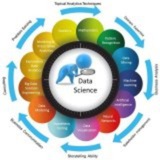Topic: CNN (Convolutional Neural Networks) – Part 4: Training, Loss Functions, and Evaluation Metrics
---
1. Preparing for Training
To train a CNN, we need:
• Dataset – Typically image data with labels (e.g., MNIST, CIFAR-10).
• Loss Function – Measures the difference between predicted and actual values.
• Optimizer – Updates model weights based on gradients.
• Evaluation Metrics – Accuracy, precision, recall, F1 score, etc.
---
2. Common Loss Functions for CNNs
• CrossEntropyLoss – For multi-class classification (most common).
• BCELoss – For binary classification.
---
3. Optimizers
• SGD (Stochastic Gradient Descent)
• Adam – Adaptive learning rate; widely used for faster convergence.
---
4. Basic Training Loop in PyTorch
---
5. Evaluating the Model
---
6. Tips for Better CNN Training
• Normalize images.
• Shuffle training data for better generalization.
• Use validation sets to monitor overfitting.
• Save checkpoints (
---
Summary
• CNN training involves feeding batches of images, computing loss, backpropagation, and updating weights.
• Evaluation metrics like accuracy help track progress.
• Loss functions and optimizers are critical for learning quality.
---
Exercise
• Train a CNN on CIFAR-10 for 10 epochs using
---
#CNN #DeepLearning #Training #LossFunction #ModelEvaluation
https://t.iss.one/DataScienceM
---
1. Preparing for Training
To train a CNN, we need:
• Dataset – Typically image data with labels (e.g., MNIST, CIFAR-10).
• Loss Function – Measures the difference between predicted and actual values.
• Optimizer – Updates model weights based on gradients.
• Evaluation Metrics – Accuracy, precision, recall, F1 score, etc.
---
2. Common Loss Functions for CNNs
• CrossEntropyLoss – For multi-class classification (most common).
criterion = nn.CrossEntropyLoss()
• BCELoss – For binary classification.
---
3. Optimizers
• SGD (Stochastic Gradient Descent)
• Adam – Adaptive learning rate; widely used for faster convergence.
optimizer = torch.optim.Adam(model.parameters(), lr=0.001)
---
4. Basic Training Loop in PyTorch
for epoch in range(num_epochs):
model.train()
running_loss = 0.0
for images, labels in train_loader:
optimizer.zero_grad()
outputs = model(images)
loss = criterion(outputs, labels)
loss.backward()
optimizer.step()
running_loss += loss.item()
print(f"Epoch {epoch+1}, Loss: {running_loss:.4f}")
---
5. Evaluating the Model
correct = 0
total = 0
model.eval()
with torch.no_grad():
for images, labels in test_loader:
outputs = model(images)
_, predicted = torch.max(outputs, 1)
total += labels.size(0)
correct += (predicted == labels).sum().item()
accuracy = 100 * correct / total
print(f"Test Accuracy: {accuracy:.2f}%")
---
6. Tips for Better CNN Training
• Normalize images.
• Shuffle training data for better generalization.
• Use validation sets to monitor overfitting.
• Save checkpoints (
torch.save(model.state_dict())).---
Summary
• CNN training involves feeding batches of images, computing loss, backpropagation, and updating weights.
• Evaluation metrics like accuracy help track progress.
• Loss functions and optimizers are critical for learning quality.
---
Exercise
• Train a CNN on CIFAR-10 for 10 epochs using
CrossEntropyLoss and Adam, then print accuracy and plot loss over epochs.---
#CNN #DeepLearning #Training #LossFunction #ModelEvaluation
https://t.iss.one/DataScienceM
❤7
🤖🧠 DeepEval: The Ultimate LLM Evaluation Framework for AI Developers
🗓️ 07 Oct 2025
📚 AI News & Trends
In today’s AI-driven world, large language models (LLMs) have become central to modern applications from chatbots to intelligent AI agents. However, ensuring the accuracy, reliability and safety of these models is a significant challenge. Even small errors, biases or hallucinations can result in misleading information, frustrated users or business setbacks. This is where DeepEval, an ...
#DeepEval #LLM #AIDevelopment #LanguageModels #ModelEvaluation #ArtificialIntelligence
🗓️ 07 Oct 2025
📚 AI News & Trends
In today’s AI-driven world, large language models (LLMs) have become central to modern applications from chatbots to intelligent AI agents. However, ensuring the accuracy, reliability and safety of these models is a significant challenge. Even small errors, biases or hallucinations can result in misleading information, frustrated users or business setbacks. This is where DeepEval, an ...
#DeepEval #LLM #AIDevelopment #LanguageModels #ModelEvaluation #ArtificialIntelligence
